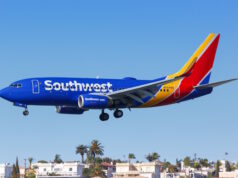
The landscape of consumer-packaged goods (CPGs) has changed dramatically in the last decade. As society has become more digitally connected and technology has become more advanced, many consumers have shifted their shopping habits.
This presents challenges to CPG companies, who must constantly adapt to stay relevant. By staying ahead of the curve and up to date on market shifts and trends, CPG companies can ensure that they remain a leading provider for customers around the world.
The Rise of Direct-to-Consumer Brands
One of the most notable changes in the CPG landscape is the rise of direct-to-consumer brands. E-commerce storefronts sell their products directly to consumers, cutting out go-betweens or retail chains. While some may have brick-and-mortar locations, brands no longer have the pressure to sell through retailers to make a profit or invest in their own physical locations. This gives them more freedom and control over pricing, product quality, packaging, marketing campaigns, and more.
The average consumer no longer wants to be limited to what is available in their local stores. They want to have access to a variety of products from all over the world. By not having to sell through retailers, many brands can offer consumers unique products that they cannot get anywhere else. This helps them stand out in an increasingly competitive market.
One notable example of a direct-to-consumer brand is Warby Parker. They sell prescription eyeglasses and sunglasses online, directly to consumers, at an affordable price. Their business model is unique because they don’t have to pay for storefronts or intermediaries and are able to offer high-quality, stylish glasses at a fraction of the cost. They have disrupted the traditional eyeglasses industry by making it more affordable and accessible for consumers, who can feel free to try on glasses before they buy them without leaving home.
CPG Rebranding Trends to Stay on Top
It is very common to see many rebranding efforts in the CPG industry. Companies are always trying to stay ahead of the curve and appeal to changing consumer trends. Some rebranding efforts can be very successful, while others fall flat. It is important for CPG companies to carefully consider any changes they make and ensure that the new brand aligns with their overall business strategy.
Examples of things CPGs are using to stay successful include:
- Social mission: Many brands have committed to social causes. For example, TOMS, the shoe company, is known for its one-for-one business model where every purchase helps to provide a person in need with shoes, water, or other essential items. Consumers are attracted to these brands because they feel like they are making a difference by buying from them and will make purchasing decisions around that. Not having a clear social mission is more likely to disrupt brand loyalty and revenue now more than ever before.
- Consumer-driven business modifications: Many CPG brands work directly with consumers to create products that they want and need. This can be done in various ways, such as through focus groups, surveys, and social media. By getting feedback from consumers upfront, companies can ensure that they are producing and marketing the right products without wasting time or money.
- Social platform: Social media has become a powerful marketing tool, and many brands are using it to their advantage by setting up social platforms. For example, many brands have their own Instagram accounts to post pictures and videos of new products. These can include behind-the-scenes looks at the company’s factory. This helps consumers feel more connected to a brand and gives them insight into different facets of the business that they may not have otherwise.
The Future of CPG: Modernizing Workstreams to Increase Efficiency
In the future, CPG companies will continue to face many challenges. However, they are in a good position because of their ability to connect directly with consumers. To stay competitive, they will need to focus on modernization and efficiency in their workstreams.
To learn more about how a technology platform can help transform how retailers, manufacturers and suppliers bring products to market in one continuous workstream, contact RIVIR.












